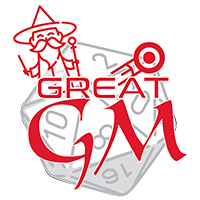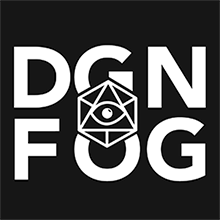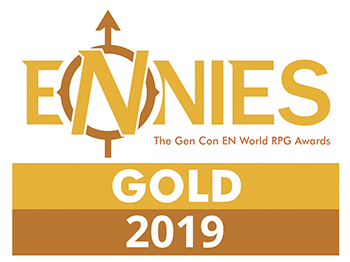Humans
HUMANS
Humans are characterized by their openness, optimism, and trust. This dynamic race believes in endless possibilities and embraces risk-taking as they seize opportunities. They predominantly thrive in arid, sandy regions, where their resilience shines.
- Age: 800-1000
- Height: Varies among individuals.
- Weight: Dependent on height and age.
- Speed: While not extraordinary, humans exhibit increased agility in sandy environments due to extensive experience and trayning.
Appearance:
Humans resemble ordinary beings, with skin that ranges from the purest white to pigmented tones adorned with white spots. In this world, the absence of pigment often results in most humans having striking colefer eyes becus the eyes are the windows to your night sky (sole). Driven by curiosity and trust, humans readily embrace risks, believing that life gains value through seizing opportunities. They possess a remarkable ability to learn diverse skills. Despite their vulnerability to cold, they display resilience, particularly in military pursuits. .In the human nation, nearly every aspect of society revolves around the military. With their entire energy and resources focused on military strength, every single human is trained as a soldier, prepared to defend their homeland at a moment's notice. However, the functioning of an army relies on more than just warriors. Therefore, there are essential roles that support military operations, such as bakers, teachers, and doctors. While these individuals may not be on the front lines, they are all capable soldiers, trained to contribute to the nation’s defense if needed.
The events of the Night of the Blue Moon deeply affected human trust and unity. Due to the betrayal and loss experienced during that fateful night, humans have grown to rely primarily on one another, forming tight-knit communities that often exclude other races. There are exceptions, of course; those from other races who wish to earn a place among humans must demonstrate their loyalty and capability to be accepted.
As a nation with a military focus, humans have a significant number of prisoners of war, many of whom are now enslaved. These slaves are often from extinct races or minorities, viewed as a sign of importance within the society. Their status as slaves reflects the harsh reality of human attitudes toward other races, where those who have been captured are seen as lesser beings, valuable only for their labor.
Given their insular nature, humans often perceive other races as strange or even threatening. This perception is reinforced by a culture that dehumanizes those outside their own, fostering an environment where diversity is viewed with suspicion. In a nation governed by military principles, empathy for other races tends to diminish, leading to a worldview where only fellow humans are considered trustworthy and worthy of respect.
The overarching military culture shapes not only their interactions with other races but also their internal dynamics. While they may profess openness, the reality is that humans remain guarded, with a focus on preserving their own. To thrive in this environment, outsiders must navigate a complex social landscape, proving their worth and loyalty to be seen as more than just an outsider.
Culture:
Human culture is vibrant and diverse, reflecting the rich tapestry of experiences and traditions that have emerged over generations. Music plays a central role in their society, incorporating a wide range of instruments such as drums, flutes, and horns. Each region has its own unique musical style, often characterized by rhythmic drumming patterns that echo the heartbeat of the land. Festivals are lively events where musicians gather, showcasing their talents and bringing communities together in joyous celebration. Their clothing is designed to be lightweight and airy, suited for the arid climates they inhabit.It also hase a lot of bird elements. Fabrics are often made from natural fibers and are adorned with intricate patterns that tell stories of heritage and identity. Glass embellishments, which serve as both decoration and status symbols, are commonly used. The use of colored glass reflects the wearer’s social standing, with brighter, more elaborate designs signifying wealth and influence. Human cuisine is equally diverse, influenced by the flavors of their surroundings. Meals are often communal, bringing families and friends together to share in the bounty of the land. Spices and herbs play a crucial role, with each dish telling a story of tradition and heritage. Storytelling is another vital aspect of human culture. Oral traditions are cherished, with elders passing down tales of heroism, love, and the history of their people. These stories are often accompanied by music and dance, creating an immersive experience that engages the audience and fosters a sense of connection to their roots. the most know story beying of Nana ther gardien and it creation.Guardians of the Desert:
Nightmares serve as human guardians, patrolling the deserts and addressing issues that arise. These fiery creatures, resembling blazing horses, are primarily used for transportation and assistance, thanks to their exceptional ability to navigate open spaces. The paramount protector of humans is a giant katsune named Nasiri, dwelling in the sandy depths, waiting for the "time when it gets to hot" to aid its people. The alternate name, Nana, is used to instill fear in children, encouraging proper behavior.THE STORY OF NANA
Once, Nana was just an ordinary fox, wandering lost beneath the relentless blaze of the desert sun. Day after day, it struggled to survive in the scorching heat until one fateful day, a kind-hearted warrior found the fox, weak and desperate. Out of pure compassion, the warrior rescued the small creature, offering it food, water, and shelter.
Grateful, the fox began to follow the warrior wherever he traveled, forming an unbreakable bond of friendship. Together, they roamed the land, facing dangers and adventures side by side.
But their fate took a dark turn when war erupted. In the chaos of battle, the warrior fought fiercely against a horde of enemies. Amid the clash of steel and cries of war, a vicious enemy turned their sights on the fox. The warrior, without hesitation, leaped in front of the fox, shielding it from the fatal blow.
With a final act of bravery, the warrior saved the fox's life but tragically lost his own. The fox, stricken with grief and guilt, stood beside the fallen warrior, wishing desperately that it had been stronger—strong enough to protect the one who had saved its life.
In that moment of sorrow and regret, the desert sky ignited in a radiant blaze, as if the heavens themselves had answered the fox’s wish. The scorching sun that had once tormented Nana now bathed the fox in a powerful light. Flames surged around its body, transforming it into a mighty, majestic fire kitsune—a protector imbued with extraordinary strength and magic.
From that day on, Nana swore to guard the desert, the land where it had been saved. It became a legendary guardian, watching over travelers and ensuring that none would suffer the same fate as the warrior who had once shown it kindness. Nana’s flames burned eternally, a beacon of protection, honor, and the enduring bond between man and beast.
And so, Nana, the fire kitsune, roamed the desert, a symbol of hope for all who wandered through the unforgiving sands.
(Human military armor is inspired by birds. Depending on the division you're in, your uniform is based on a different bird species, and the design varies according to your rank.)
Remove these ads. Join the Worldbuilders Guild












Comments